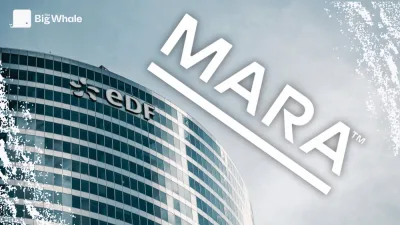TBW - Hyperliquid: is the criticism justified?

On 29 November, the crypto ecosystem witnessed a historic event: the airdrop of Hyperliquid and its HYPE token. The launch set X ablaze for one simple reason - it was the biggest airdrop ever. More than 90,000 DEX users received amazing rewards, some getting 6 and even 7-figure amounts. A community giveaway on this scale was unprecedented. But where did this craze come from? And above all, what is Hyperliquid? That's what we're going to explore in this analysis.
What is Hyperliquid?
Hyperliquid is a decentralised trading platform (DEX) specialising in perpetual contracts, which runs on its own ultra-fast layer 1 blockchain. Unlike other perpetual contract DEXs, Hyperliquid operates entirely on-chain with an integrated order book directly on its blockchain, ensuring total transparency without sacrificing speed of execution.
Hyperliquid's "HyperBFT" consensus mechanism achieves block latency of just 200 milliseconds, while its trading engine can process up to 200,000 orders per second. This performance offers a fluid user experience comparable to centralised platforms, but without the need to entrust your funds to a central entity. The use of an order book allows traders to avoid slippage, a common problem on DEXs using AMMs, where trades are often slowed and suffer liquidity problems.
This successful combination of the efficiency of a CEX and the decentralisation of a DEX appealed to many traders, even before the airdrop propelled the project into the spotlight.
Hyperliquid currently offers just one application, but has ambitions to develop an ultra-high-performance financial ecosystem.
The team
Hyperliquid Labs was founded by Jeff Yan and Iliensinc, two Harvard graduates in mathematics and computer science who share the same vision: to transform on-chain trading by combining the efficiency of centralised exchanges with the transparency of DeFi.
While information about the founders is limited, particularly regarding Iliensinc and the rest of the team, here's what we know about Jeff Yan:
He began his career at Hudson River Trading (HRT), where he worked on US equity markets, combining engineering and mathematics in an environment ideal for a quant.
In 2018, fascinated by the emergence of smart contracts on Ethereum, he left HRT to develop an exchange protocol. The project was quickly abandoned, however, due to a lack of users and regulatory uncertainties.
After a period of reflection, he returned to trading in 2020, specialising in cryptocurrencies. This initiative met with remarkable success, placing him among the leading market makers on centralised exchanges.
More recently, with his partner, he turned his attention to decentralised finance, identifying an opportunity in improved protocols and the growing demand for accessible solutions with no counterparty risk. He now devotes all his time to developing Hyperliquid.
Financing
Unlike other layer 1, DEX and crypto projects in general, Hyperliquid has not called on any outside investment.
Research reveals no potential investors. The distribution of tokens does not include any allocation for VCs or exchanges, and the team clearly states that it has not received any external funding. Development relies solely on their personal funds.
By choosing this bold approach, which goes against the grain of usual practice, the Hyperliquid team has made a decision that particularly benefits the community, as we'll see in the section on airdrop. This independence has also enabled them to develop their vision of the product without external constraints.
Competitors
Thanks to its positioning, Hyperliquid competes simultaneously with centralised exchanges (CEX) and decentralised exchanges (DEX perp and classic AMM) thanks to its exceptional performance. No other player currently occupies this specific niche.
In the CEX universe, Hyperliquid is often seen as the future Binance on-chain. In December, the DEX went head-to-head with giants such as Binance, ByBit and OKX.
In recent weeks, Hyperliquid's open interest has in fact reached 10% of Binance's on the BTC-USD pair.
.png)
Open interest from Binance on the BTC-USD pair: https://www.binance.com/en/futures/funding-history/perpetual/trading-data
.png)
Hyperliquid's open interest on the BTC-USD pair: https://stats.hyperliquid.xyz/
It also accounted for 17% of ByBit's open interest and 50% of OKX's open interest on the BTC-USD pair during this period.
In the DEX universe, Hyperliquid has established itself as a serious competitor to the biggest Perp DEXs such as dYdX, Jupiter, Synthetix or GMX, both in terms of volume and open interest and TVL.
Currently, Hyperliquid occupies the 5ᵉ position among the DEX Perps in the DeFi as a whole in terms of TVL, and the 22ᵉ position overall, with more than $1.8 billion in locked-up value.
Despite a recent slowdown, Hyperliquid dominated the market in December by capturing more than 50% of total DEX Perp volume, even reaching peaks of $10 billion in daily volume and consolidating its leadership position.
.png)
Taking a step back on the scale of the blockchain, we can see that with a single protocol, the total value locked (TVL) on Hyperliquid already exceeds that of giants such as Avalanche, Polygon, Optimism or Aptos. The next blockchains to catch up are Sui and Arbitrum...
.png)
Project business model
As well as dominating DEX Perp volume, Hyperliquid is setting new revenue records.
These revenues come from two main sources: trading fees and auction fees related to the listing of new tokens.
Trading fees
These fees are calculated according to the volumes traded and break down as follows:
.png)
Over the past 30 days, Hyperliquid has generated more than $20.75m in fees, twice as much as Aave and comparable to giants Pancakeswap and Maker.
It should be noted, however, that Hyperliquid is currently enjoying momentum linked to its airdrop and the visibility that comes with it. These statistics could change significantly in the coming months, especially as income from trading fees is by nature highly volatile.
You can track fees collected in real time on this explorer.
Later, fees generated by HyperEVM, the EVM layer of the Hyperliquid blockchain, should also be added to the project's revenues.
Auctions
The listing of tokens on the DEX works via a unique auction system. Every 31 hours, Hyperliquid auctions off a "right to be listed". Projects must then bid to obtain this slot.
The initial price is set at double the previous bid. If there are no higher bids, the price gradually decreases until a buyer comes forward. The auction ends after 31 hours, and the highest bid wins.
This system has proved highly lucrative: the latest listings have sold for several hundred thousand dollars, with a record of $975,746 for the ticker GOD.
.png)
Auctions create a financial barrier that naturally filters out fraudulent projects, while remaining more accessible than listings on centralised exchanges.
Today, DEX offers a wide range of trading pairs, going beyond DeFi: memecoins, AI tokens, gaming, layer 1, layer 2...
A perfect marketing operation
The HYPE token airdrop set a precedent. Currently, with the value of the token, the airdrop represents a theoretical value in excess of $7.7 billion. By comparison, zkSync's ZK airdrop is worth $740 million, and Optimism's airdrop reached $970 million at its all-time high.
But how can such scale be explained?
The answer lies in the project's unique tokenomics. Contrary to usual practice, the Hyperliquid team did not call on the investment funds and private investors who generally control the majority of tokens before they are put on the market. For the first time in a long time, HYPE has been massively distributed to its active community: 31% of the total supply was allocated to more than 94,000 users during the initial airdrop, and 76.2% will gradually be redistributed to the community.
.png)
As a result, the average amount of airdrop received by users currently stands at $73,000.
What's in it for the project?
Beyond the buzz on social networks and its growing notoriety, the Hyperliquid blockchain - with its DEX as its only application - has seen an explosion of activity and spectacular growth in its TVL.
.png)
Since the airdrop, TVL has increased 16-fold. Generally speaking, airdrops struggle to keep users. If we look at Scroll, for example, here's the TVL curve before and after the airdrop, despite a far greater number of dApps being deployed on the channel:
.png)
The volume on DEX has also never stopped growing since its launch, with a significant increase after the airdrop :
.png)
There are several reasons for Hyperliquid's remarkable success:
- The DEX's exceptional performance is attracting new traders, particularly those used to competing platforms such as dYdX or GMX, thanks to the visibility generated by the airdrop.
- The overall growth of the market since August 2024, reflected by the continued increase in TVL, is bringing new users to DeFi. Hyperliquid, now recognised among the leading derivative DEXs, is attracting these users by offering them a CEX-like experience. The timing of the airdrop proved perfect.
- The implementation of MiCA regulations in early 2025 is forcing European CEXs to limit their derivatives services, pushing users towards decentralised KYC-free alternatives. To date, these decentralised platforms are not subject to any regulation.
- Airdrop pranksters are contributing to the dynamic, bearing in mind that 40% of the supply remains to be distributed to the community.
This "community first" approach is proving its effectiveness and could inspire other projects in their tokenomics, making the traditional "VC first" model obsolete.
What is the HYPE token used for?
The HYPE token was recently integrated into the staking mechanism to secure the network. Holders can earn a return by depositing their tokens in one of the validator servers active on the mainnet.
In the future, HYPE will also be used to pay gas fees on the HyperEVM version (currently in testnet), which should increase its usefulness.
Risks: CEX in disguise?
Periods of euphoria (no pun intended on HYPE) are often accompanied by an underestimation of risk, which investors can end up paying dearly for. Unfortunately, Hyperliquid has several grey areas that are impossible to ignore.
Although Hyperliquid presents itself as a totally decentralised solution with an on-chain order book, is this really the case? The source code of the blockchain remains entirely closed. What's more, until early January, only four validator nodes, all belonging to the foundation, were operating the network. Fortunately, new players have since joined the validation effort.
.png)
At present, only the consensus mechanism is transparent and auditable by the community. For everything else, users have to put their complete trust in a small group of players who could act in their own interests or fall victim to a cyber attack.
The good news is that decentralisation is making progress, as shown by the testnet version of the blockchain, which already has more than 60 validators. The Hyperliquid Foundation is also planning to launch a delegation programme to encourage the best-performing validators and strengthen the network's decentralisation.
Finally, the team has stated on Discord that it will publish the source code for the nodes as soon as the level of security is deemed sufficient. Patience, then.
The FUD
In recent days, a worrying post has been circulating on X, which should, however, be viewed with caution given that we don't really know the background of its author.
In this tweet, the author reveals transactions made on DEX that are allegedly linked to North Korea, an infamous player in the crypto ecosystem.
According to the author, these transactions could be preliminary tests aimed at understanding how the platform works before launching a major cyber attack to steal the funds.
The concentration of the four validators in the hands of closely linked individuals represents a worrying vulnerability in this context. These individuals could be targeted by social engineering attacks or their personal computers compromised by malware.
In response to these allegations, the Hyperliquid team has disputed the author's credibility and claimed to adhere to the highest security standards in the ecosystem. Naturally, the team is seeking to prevent the existing FUD from spreading.
.png)
The Big Whale's analysis
Hyperliquid's airdrop made a big impact and catapulted the project into the spotlight. The excellence of their marketing strategy, combined with the quality and effectiveness of their application, has attracted a considerable user base.
Hyperliquid's unique positioning - a DEX Perp at the junction of the centralised and decentralised worlds - opens up a huge market. The project could dominate this segment if it continues to develop according to its initial vision.
However, several grey areas raise questions: the closed source code, the limited number of validating nodes and the limited usefulness of the HYPE token.
The future of Hyperliquid lies in its ability to resolve these concerns while maintaining community involvement. Greater transparency through the opening up of source code and genuine decentralisation of nodes (already underway) are proving essential to avoid the pitfall of "CEX in disguise". Let's give them the time they need to develop their solution. After all, no innovation is perfect - especially in DeFi. The team will probably be able to adapt their products to meet security requirements and continue to expand on a large scale.



